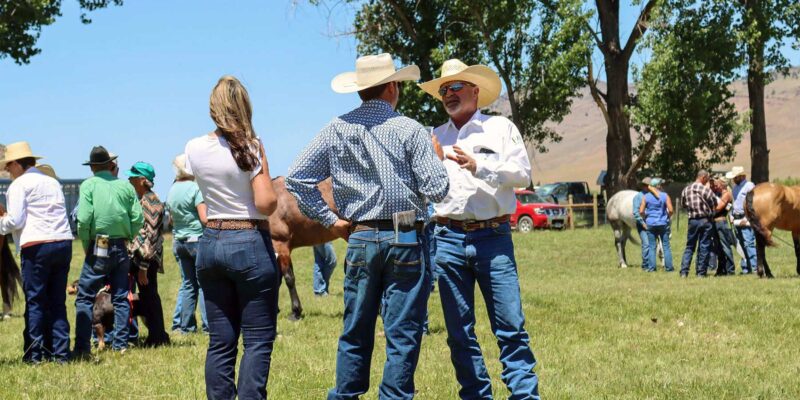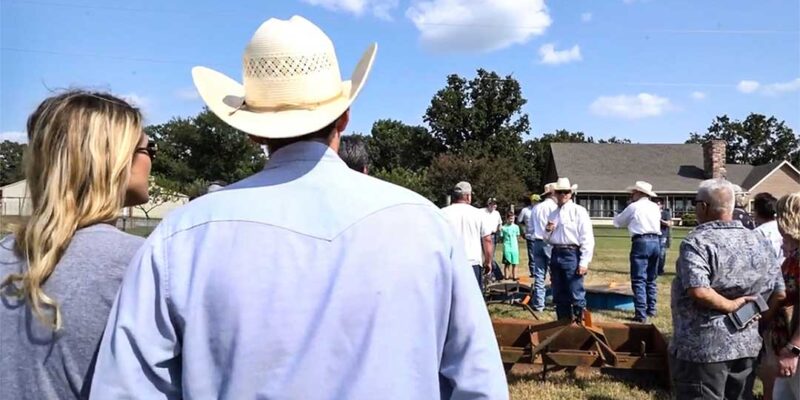Selling land at auction is a highly effective way to ensure you get a fair market value – or better. Auction creates the market for rural real estate and offers a transparent and efficient process to connect you to potential buyers. However, an important part of preparing for this process is setting your reserve price—the minimum amount you’re willing to accept for your land.
The reserve price is a critical benchmark that protects your financial interests while also ensuring your real property is attractive to bidders. Setting this price requires careful planning and consideration. Read on to learn how to determine the right reserve price for your land.
What is a Reserve Price?
Before diving into how to set it, it’s important to fully understand what a reserve price is. The reserve price is the minimum bid that the seller is willing to accept for their property at auction. If bidding doesn’t reach the reserve, the land will not be sold, giving the seller control over the ultimate outcome of the sale.
Unlike an ‘absolute’ or ‘no reserve’ where the property sells to the highest bidder regardless of price, having a reserve price in place ensures that your land won’t sell below your minimum price.
Why Setting the Right Reserve Price Matters
Setting the right reserve price for your land is a balancing act. An auction reserve that’s too high is likely to scare off potential buyers, dampen bidding activity and possibly result in no sale. A high reserve often creates the perception that the property is overpriced or that the seller is unlikely to accept any bid, which discourages people from participating in the auction. Setting the reserve price too low might leave money on the table, failing to maximize the value of your land. It’s essential to find the sweet spot that ensures competitive bidding while protecting your financial goals.
By setting the reserve price strategically, you create an atmosphere of excitement and opportunity, attract the largest potential buyer pool, entice people to engage in bidding wars and drive up your final sale price. Collaborating with experienced auctioneers helps you strike the balance between attracting interest and optimizing the value of your land. They will help you assess market conditions, analyze comparable sales data, and guide you in determining a reserve price that aligns with your goals and resonates with potential buyers’ expectations and capacities. With the right reserve price, you enhance the chances of getting top dollar.
Steps to Set a Reserve Price
First, understand your land’s market value. The starting point for setting your reserve price is knowing the fair market value of your land. This depends on several factors, including location, condition, acreage, soil quality, zoning, water rights, accessibility, potential uses and neighboring properties.
Experienced land auctioneers understand local markets and can offer insight into how your property fits into buyer demand. They’ll assess your land’s unique qualities and analyze recent sales of similar properties to understand what buyers are currently paying for land with comparable features.
Take these steps to become comfortable setting your reserve price:
- Consider your financial goals. Think about what you need to achieve financially from the sale. Ask yourself questions such as: What is the lowest price I’m comfortable accepting? Does this sale have specific financial obligations tied to it (e.g., paying off a loan, reinvestment goals)? Establishing these benchmarks can help guide your reserve price decision.
- Evaluate unique selling points. Does your property have features that will drive up demand? Examples might include prime soil for farming, abundant water access, or existing fencing ideal for cattle grazing. Highlighting these features during the auction can impact bidder interest, potentially influencing your reserve price.
- Assess current market conditions. The agricultural and real estate markets can fluctuate based on broader economic and environmental factors. For example: Are land values in your region trending upward or downward? Is there high demand for farmland or development land in the area? Staying informed about supply and demand dynamics can help you gauge whether to set a more aggressive or conservative reserve price.
- Factor in costs and liabilities. Keep in mind the costs associated with selling your land, as this might influence your reserve price. These costs can include auctioneer fees, legal fees, title searches, and paying off any outstanding property tax or liens. If the land has maintenance requirements (e.g., erosion control, invasive plant removal), you may need to incorporate these factors into your reserve.
- Be Open to expert advice. While you might have an idea of what you want from the sale, it’s always wise to listen to professionals. Auctioneers, land agents, and appraisers are well-versed in local market trends and bidder behavior. They can help refine your expectations, ensuring you set a reserve price that strikes the right balance.
Common Mistakes to Avoid When Setting a Reserve Price
- Setting the reserve too high. An overly ambitious reserve price might prevent bidders from entering the auction, leaving you with no offers at all. Remember, the goal is to generate competitive bidding that pushes the final sale price upward.
- Forgetting to factor in market trends. Failing to account for current market demand (or saturation) may leave your reserve price out of sync with potential buyers’ expectations and capacities.
- Not Revealing the reserve strategically. While it’s common for the reserve price to remain private, some sellers and auctioneers choose to hint at its range to encourage bidding activity. Discuss with your auctioneer the best strategy for your specific situation.
Key Takeaways
Setting the reserve price for your land is a crucial step that requires careful planning and collaboration with experts. By understanding your land’s value, staying informed on market conditions, and aligning the reserve with your financial goals, you can maximize the chances of a successful sale.
If you need guidance through the process, partner with a trusted auction company like CJ Real Estate auction. Eric and Ronn will help you make data-driven decisions and secure the best outcome for your property.













